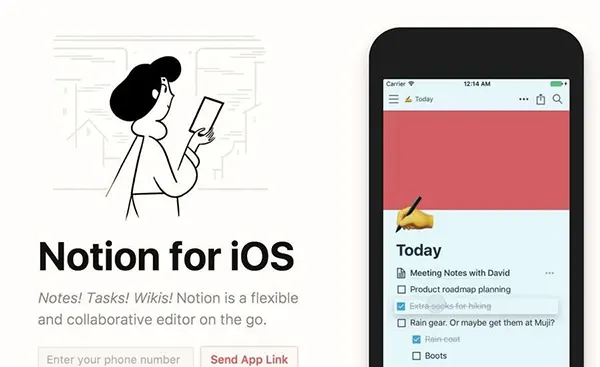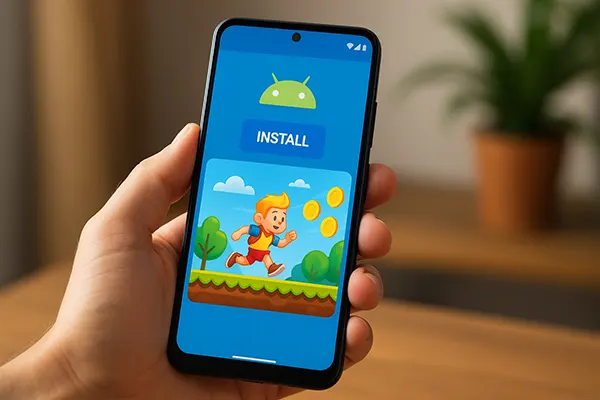
Notion Mobile — The All-in-One Organiser for Study and Work
In a rapidly changing digital environment, mobile productivity tools are becoming essential for effective studying and working. Notion Mobile stands out as a multifunctional organiser that combines notes, tasks, databases, and collaboration tools within one intuitive environment. It allows users to structure their workflow, keep learning materials in order, and manage projects directly from their phones, making it a practical choice for busy students and professionals in 2025.
Core Features of Notion Mobile
Notion Mobile offers a wide range of functions that make it more than just a note-taking app. Users can build databases, create to-do lists, design project boards, and manage content in various formats. The flexible block-based structure allows embedding text, images, audio files, and external links on a single page, which simplifies the organisation of complex projects.
The application’s collaborative tools are particularly valuable. Users can invite colleagues or classmates to shared workspaces, assign tasks, leave comments, and track progress in real time. This functionality is ideal for team projects, remote learning, and group research work where communication and coordination are crucial.
Another strong advantage is seamless synchronisation across devices. All updates made on a smartphone instantly appear on tablets and computers, ensuring constant access to the most recent data. This cross-device continuity saves time and reduces the risk of losing important information.
How It Compares to Google Keep and Evernote
When compared with Google Keep and Evernote, Notion Mobile provides far more customisation options and structural depth. Google Keep focuses on quick note-taking, but it lacks advanced organisation features like databases and kanban boards. Evernote is powerful for storing large volumes of notes, yet it does not allow the same level of page customisation as Notion.
Notion’s ability to combine wikis, task boards, and databases in one place gives it a clear advantage for users who handle complex workflows. This level of integration helps avoid using multiple separate apps for different tasks. It centralises information, reducing the time spent switching between tools.
However, this complexity may also be seen as a drawback for users who only need simple note-taking. Google Keep’s minimalism or Evernote’s straightforward note structure might be more suitable for those seeking simplicity without extensive setup.
Offline Mode and Device Synchronisation
Notion Mobile supports offline mode, allowing users to work without an internet connection. Any edits made offline are saved locally and automatically synchronised once the device reconnects to the network. This feature ensures productivity is not interrupted during travel or in areas with poor connectivity.
While offline capabilities are functional, they require users to open the needed pages beforehand so they become available without internet. This slight limitation is worth noting for those who rely on spontaneous note-taking. Still, once pages are cached, they work smoothly without delays.
The synchronisation system between devices remains one of Notion’s strongest features. It ensures that notes created on a phone can be immediately accessed on a laptop or tablet, maintaining a consistent workflow across platforms. This is particularly useful for users who frequently switch between devices during the day.
Practical Tips for Using Offline Features
Before travelling or going offline, it is advisable to open all important pages on Notion Mobile to enable their offline availability. This simple step ensures you will not lose access to critical documents when you need them most. It also helps the app preload images and other embedded content for smoother offline use.
Using offline mode is especially useful during lectures, meetings, or flights where internet access is limited. Users can continue writing, editing, and structuring their notes without interruptions. Once back online, all changes will sync automatically without additional steps.
Regularly checking sync status is also helpful. It guarantees that the most recent updates are stored on the device, reducing the risk of data loss in case of technical issues or sudden disconnections. This makes working in Notion Mobile more secure and reliable.

Advantages and Drawbacks of Notion Mobile
One of the main advantages of Notion Mobile is its versatility. It unifies task planning, knowledge management, and collaboration in a single environment, eliminating the need for multiple separate tools. Its flexible structure fits various workflows, from academic research to business project planning.
The app also offers a wide range of free templates, helping users quickly set up workspaces without starting from scratch. These templates can be customised to match specific needs, saving time and encouraging consistent organisation practices. This makes the onboarding process smoother for new users.
However, Notion Mobile has a learning curve. Beginners may find its interface overwhelming due to the abundance of functions and settings. In addition, while it is powerful, it can feel slower on older mobile devices compared to simpler note-taking tools like Google Keep. These aspects should be considered when choosing the right organiser.
Who Will Benefit Most from Notion Mobile
Notion Mobile is ideal for students who need to organise lectures, assignments, and project materials in one place. Its structured approach helps them track deadlines and maintain consistent progress across subjects. The collaborative tools are also useful for group projects and shared research tasks.
For professionals, the app provides an effective way to manage tasks, store documentation, and plan long-term strategies. Teams can work together in shared workspaces, assign responsibilities, and monitor performance without switching between different apps. This increases efficiency and clarity within organisations.
Freelancers and independent creators can also benefit from Notion Mobile’s adaptability. They can combine content calendars, financial records, client notes, and to-do lists within one workspace. This reduces digital clutter and keeps their work streamlined, especially when switching between mobile and desktop devices.



